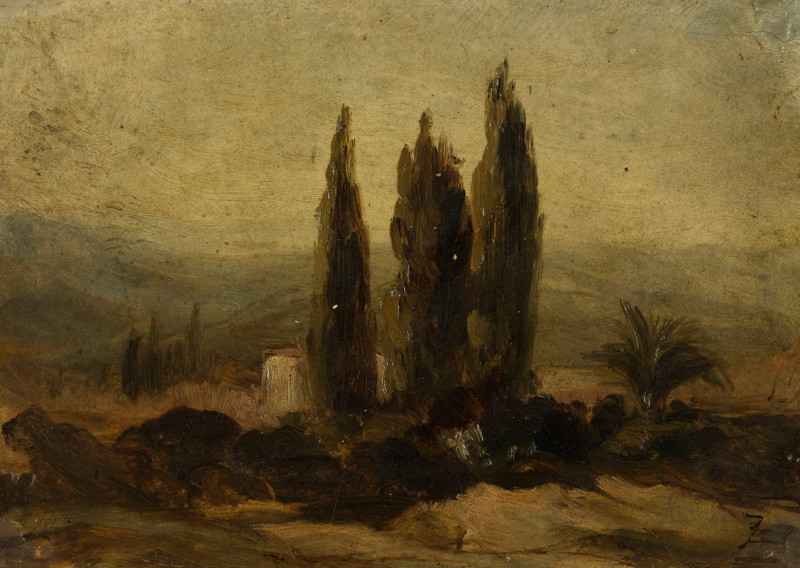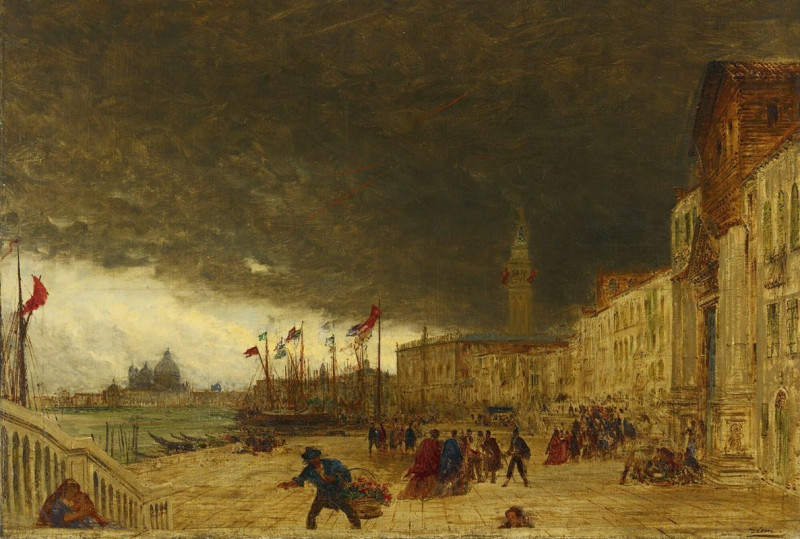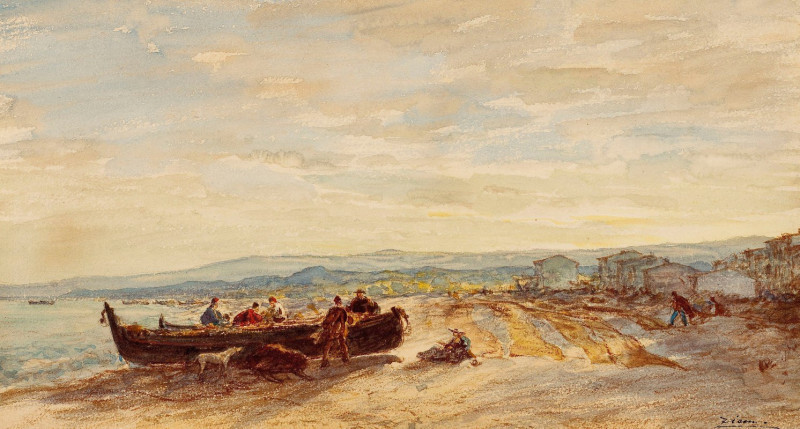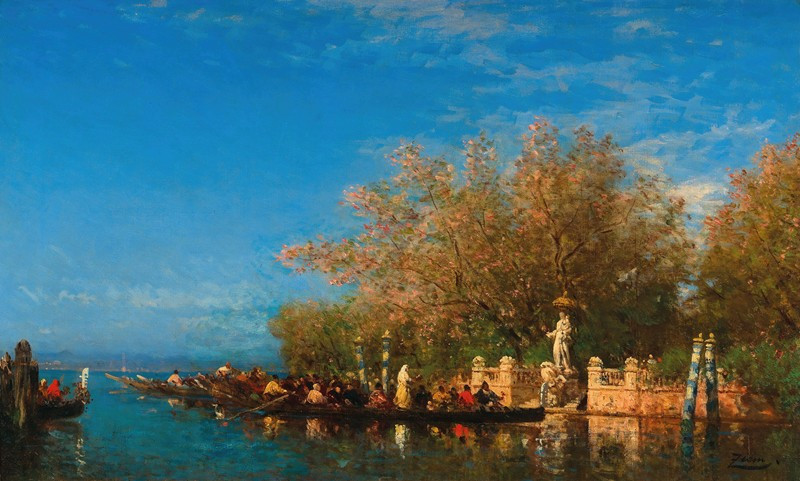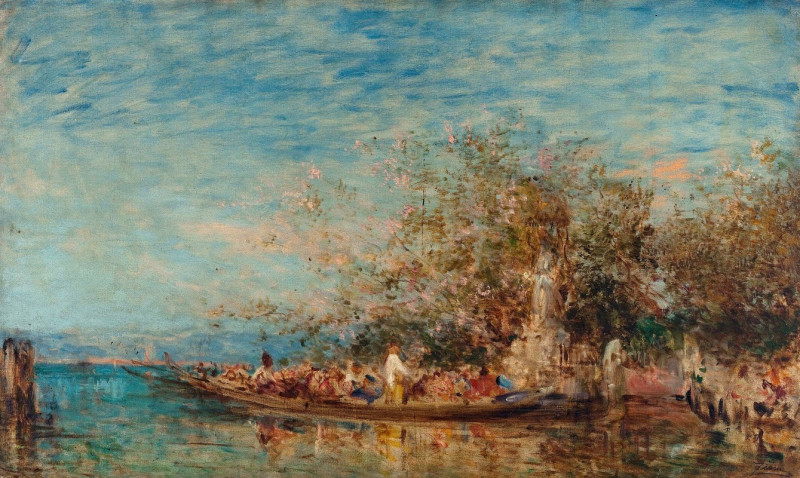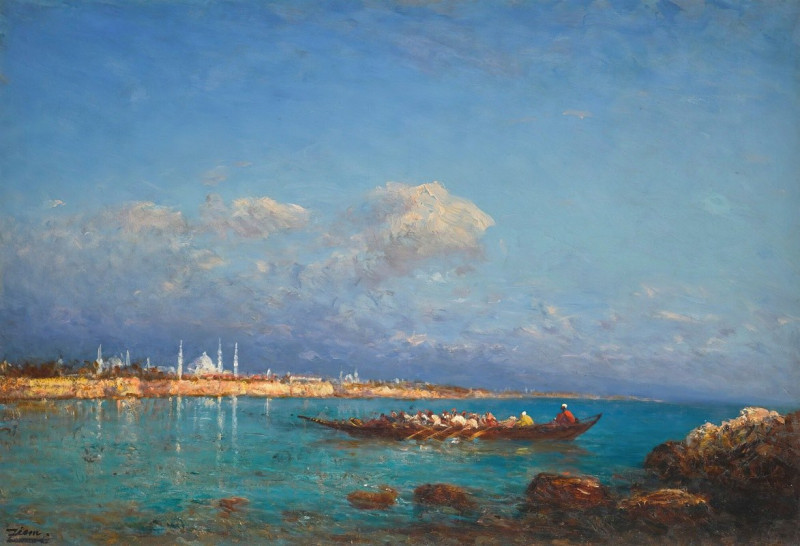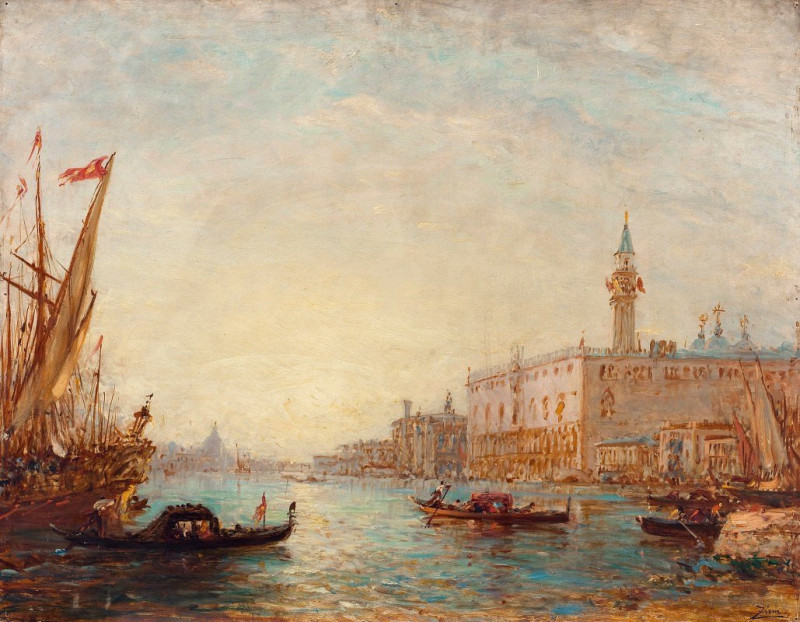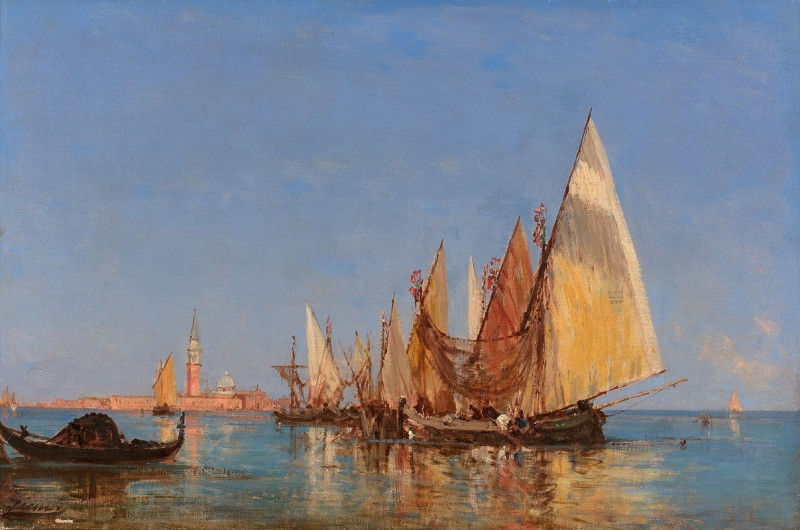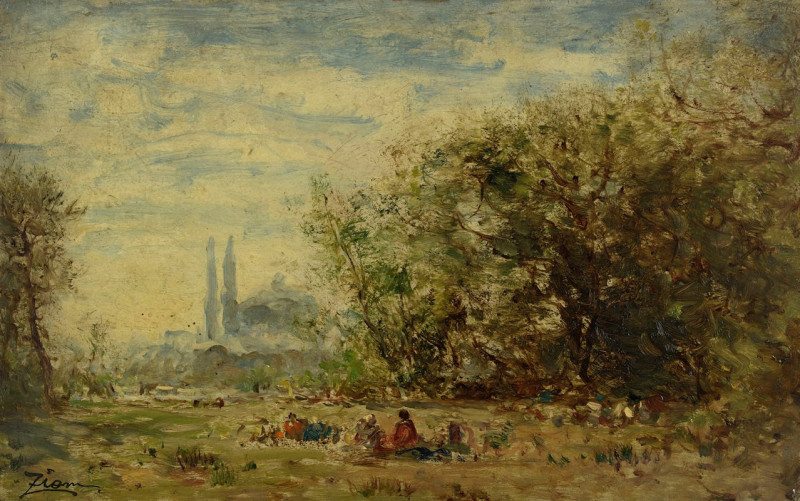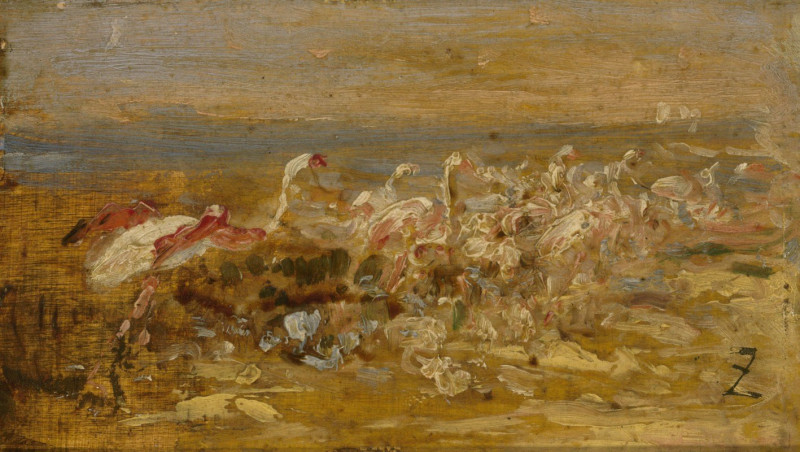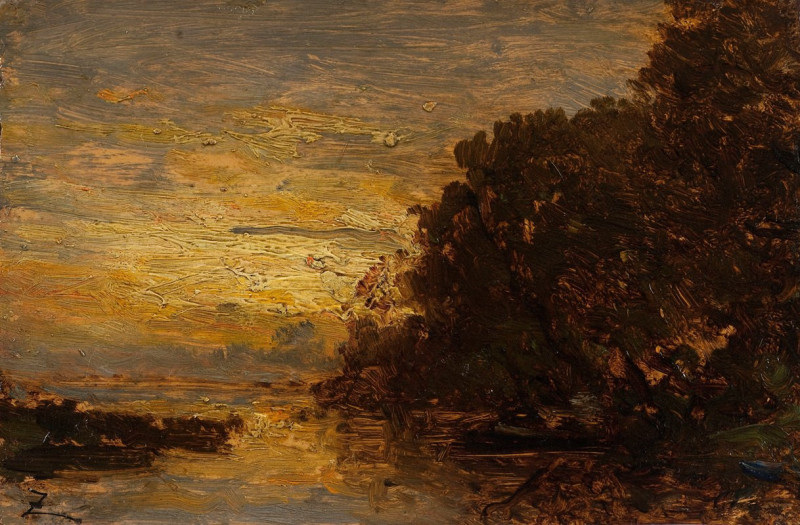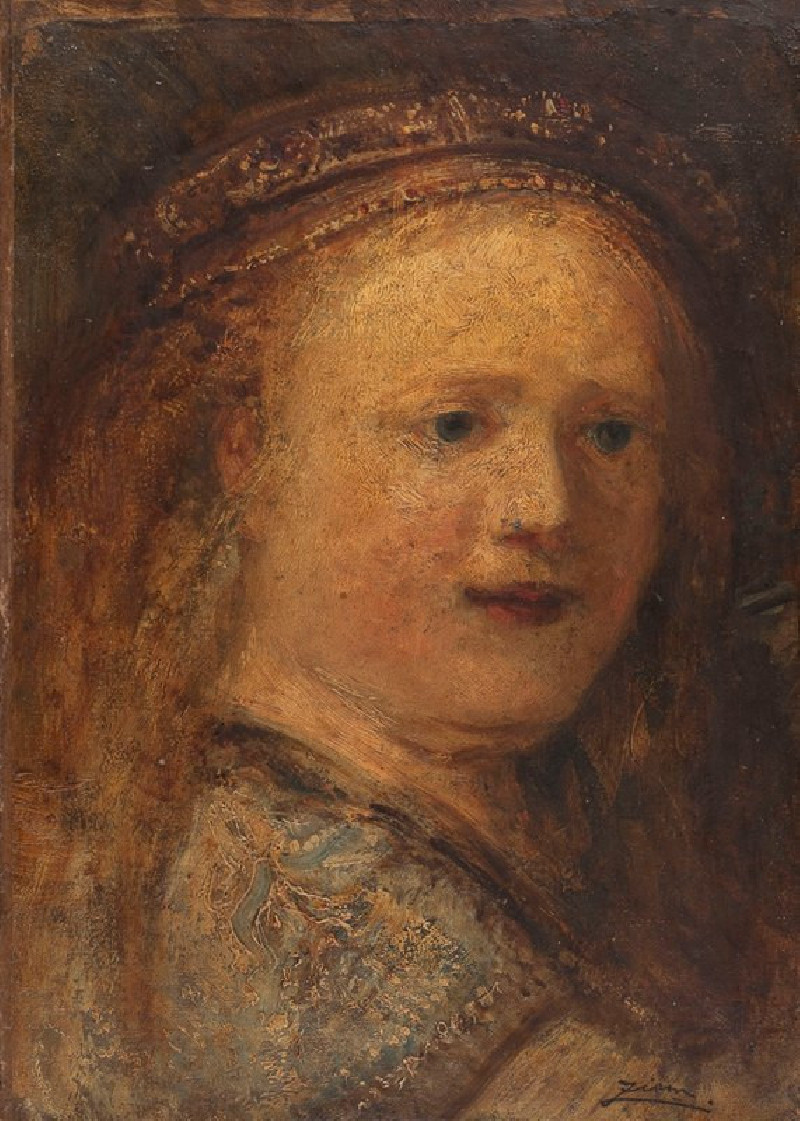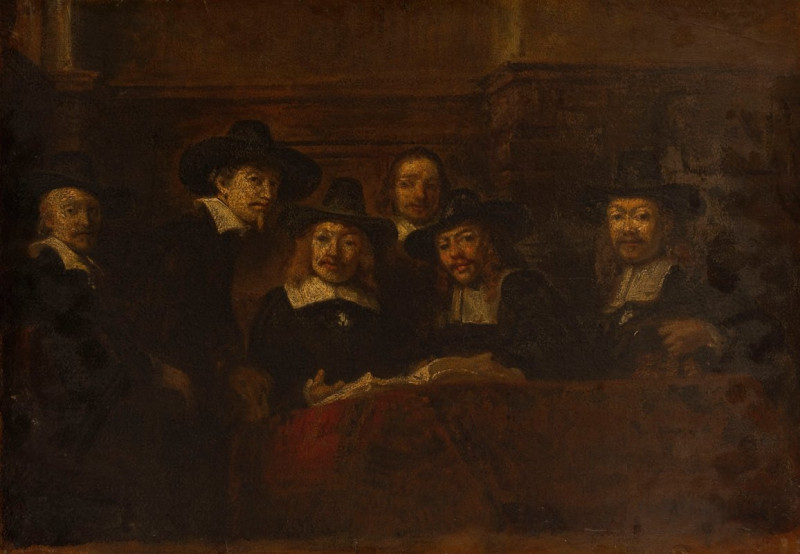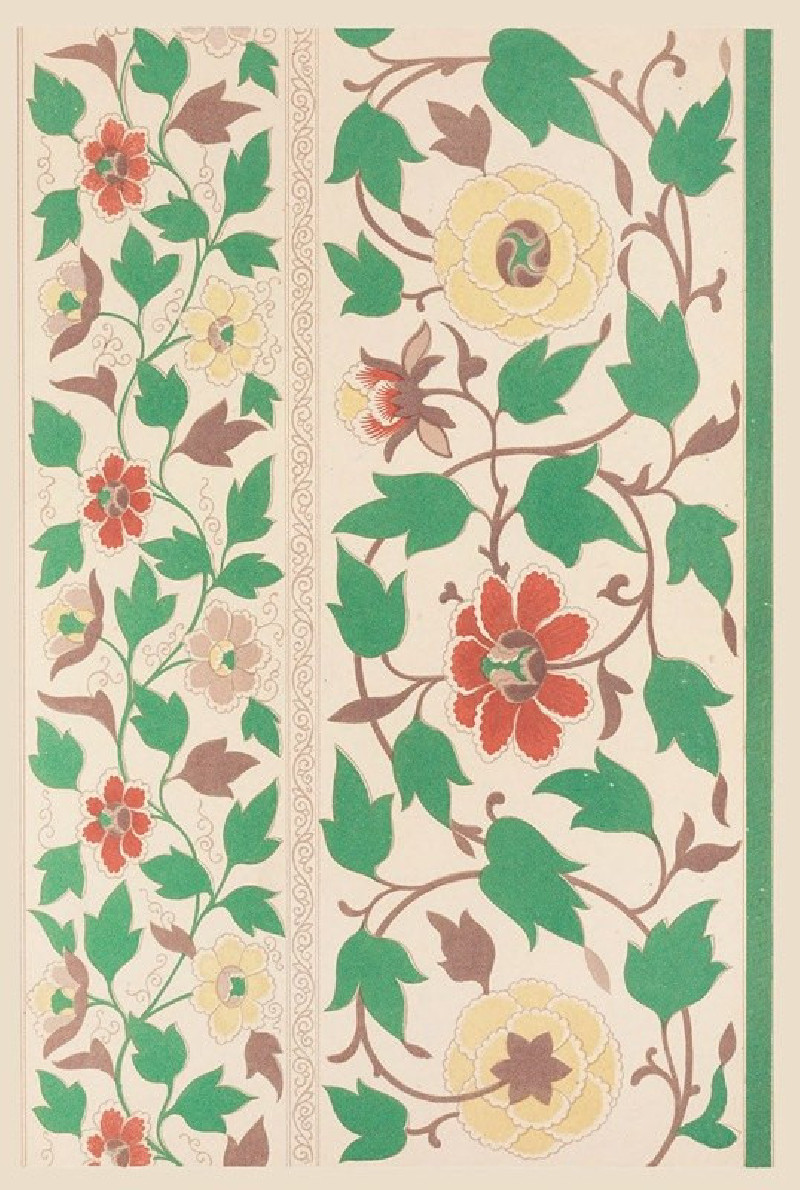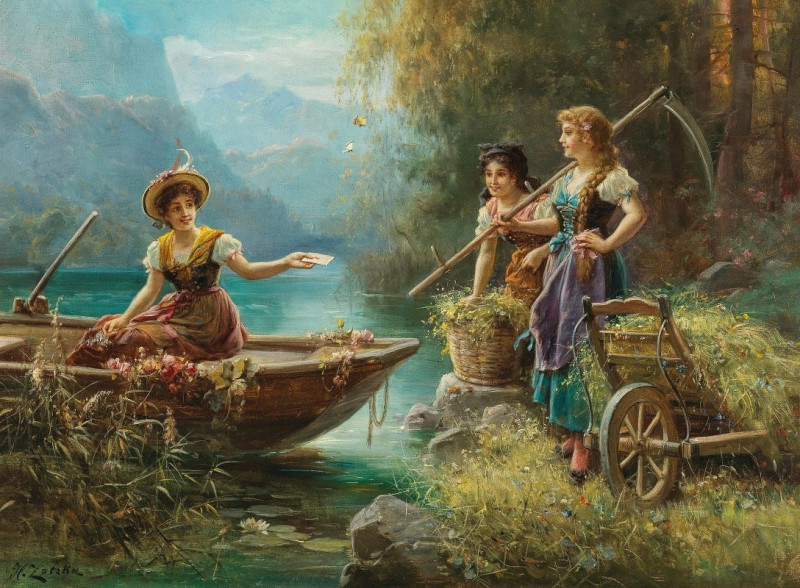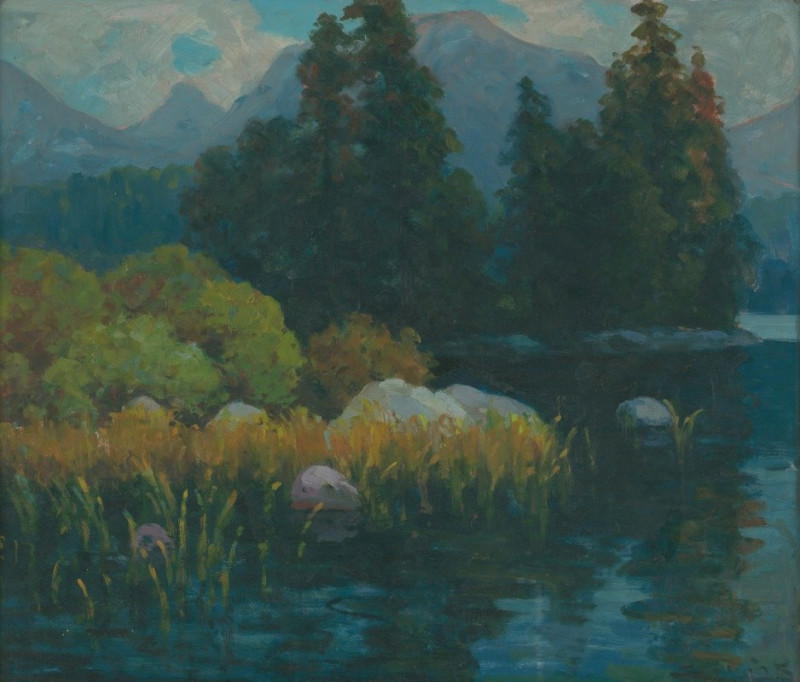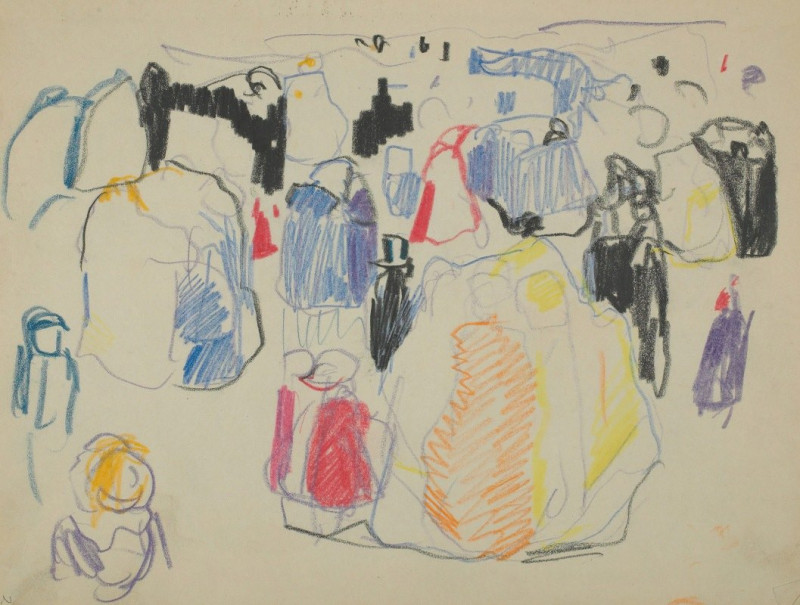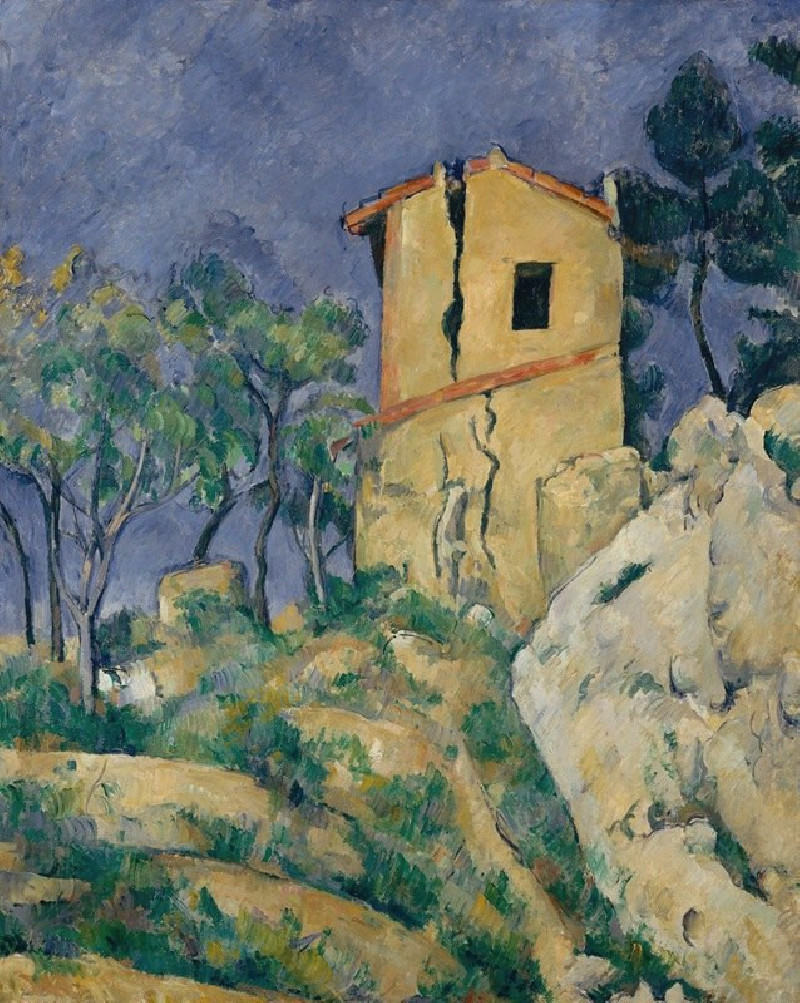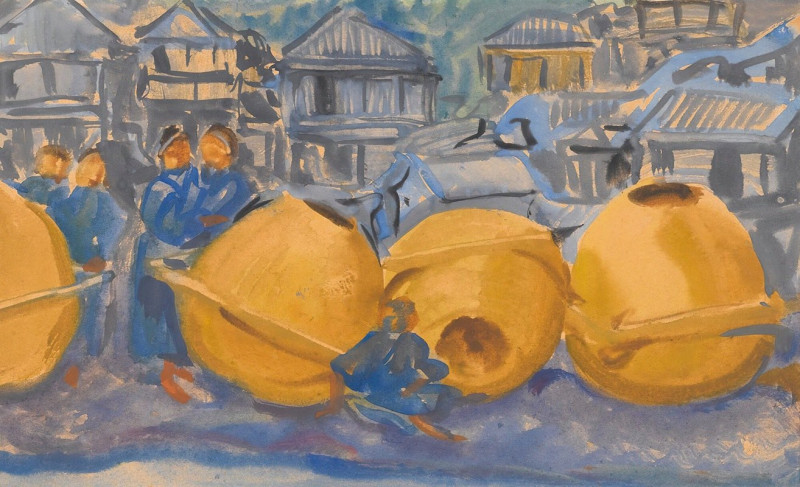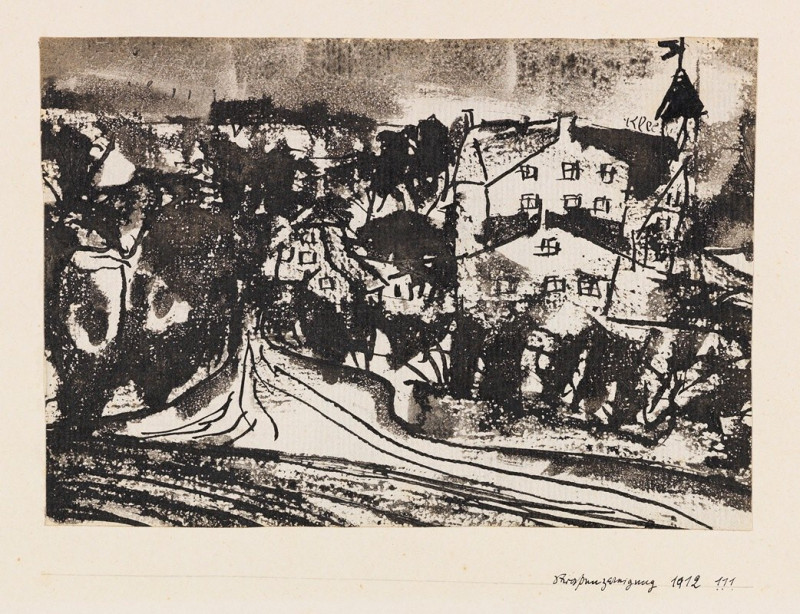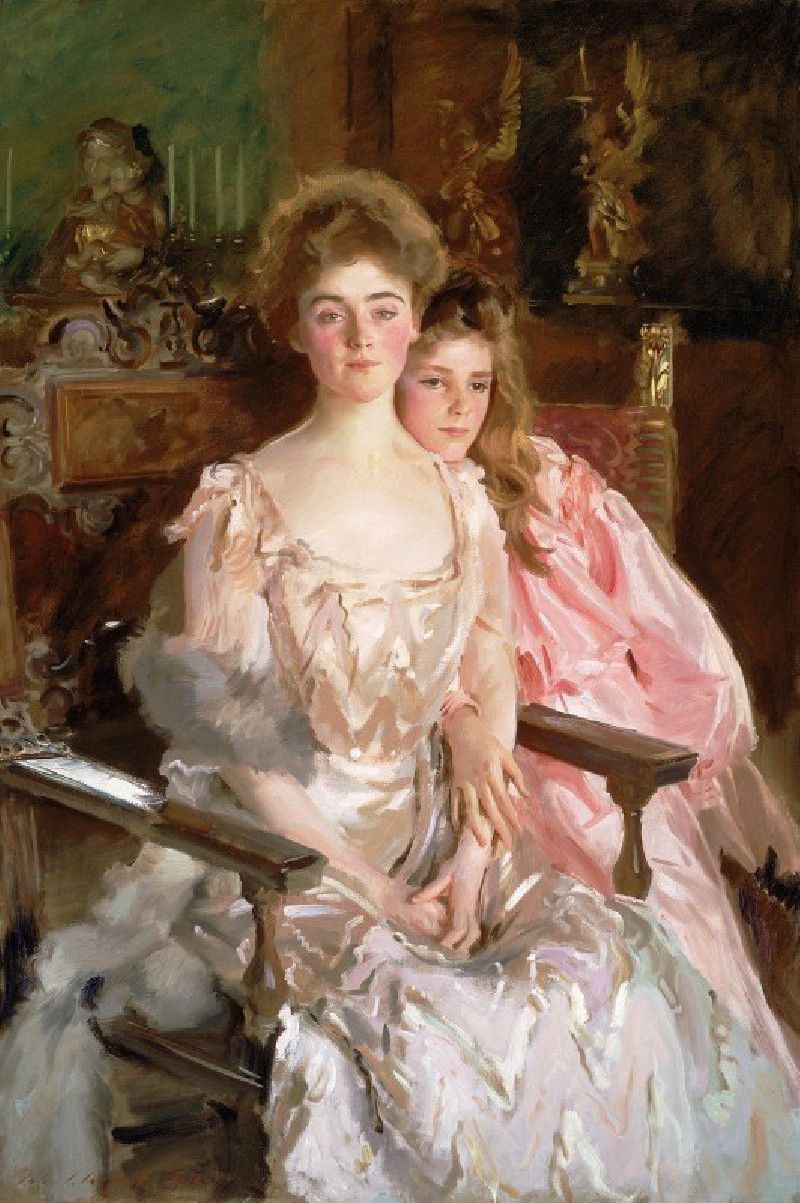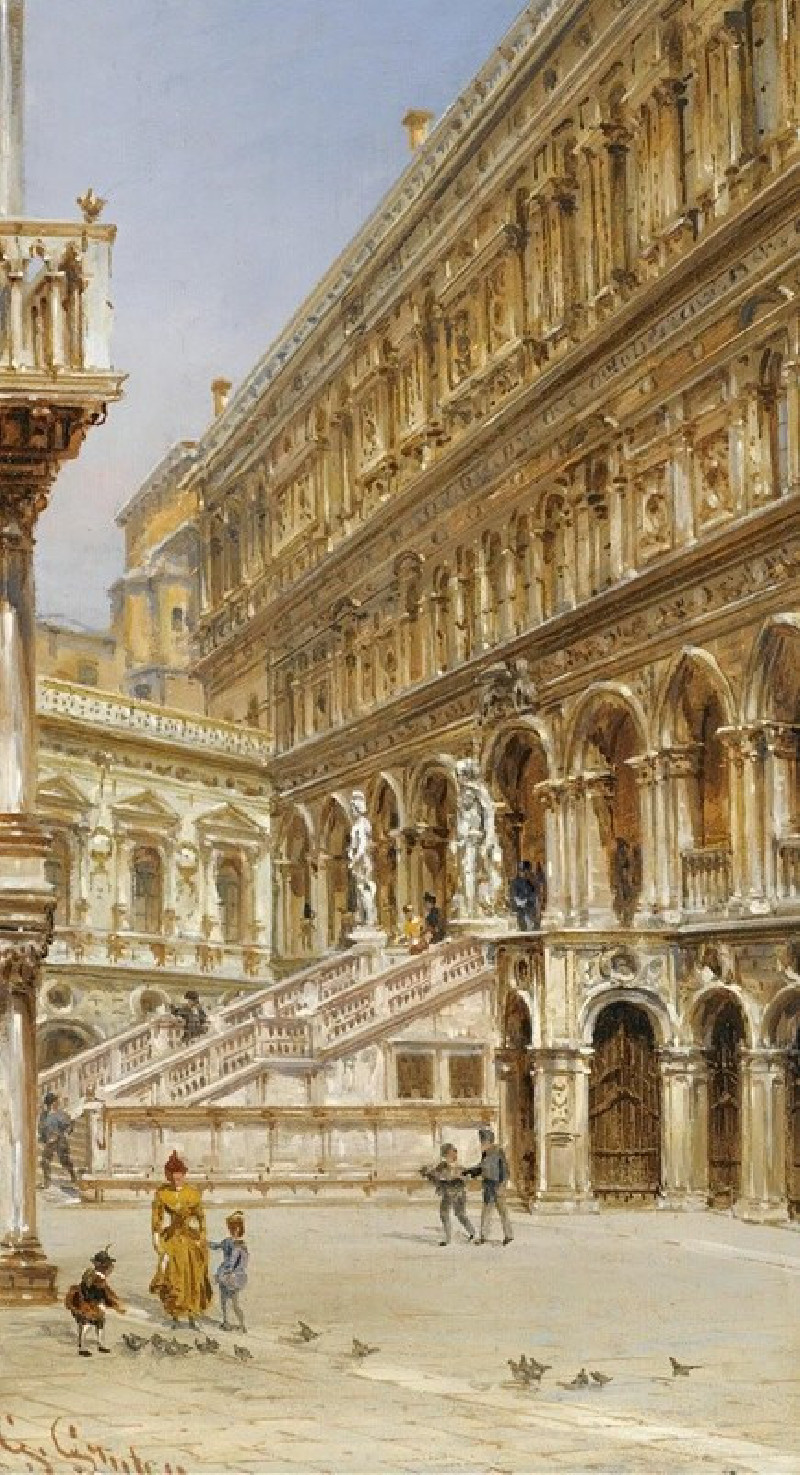Nature Morte Aux Pastèques Et Couteau
Technique: Giclée quality print
Recommended by our customers
More about this artwork
Félix Ziem's captivating still life, "Nature Morte Aux Pastèques Et Couteau," extends an immediate visual invitation to viewers through its vivid and textural representation of cut watermelons accompanied by a solitary lemon and a pointed knife. The ripe fruit, evoking a sensation of freshness and warmth, dominantly occupies the canvas, intriguingly cut open to reveal richly detailed and juicy interiors.The painting is notable for its robust, deep reds and contrasting dark background that magnify the organic vibrancy of the melon. Ziem's brushwork creates a tactile surface that enhances the palpable weight and texture of the watermelon flesh, while the soft, indistinct backdrop provides a mysterious depth, perhaps hinting at the ephemeral nature of decay and life. The inclusion of the knife not only adds to the composition's dynamic but also serves as a symbol of the moment captured — an interruption in the watermelon's wholeness.This still life goes beyond simple representation; it is a celebration of sensory pleasures and a contemplation on the transient beauty of nature's bounty.

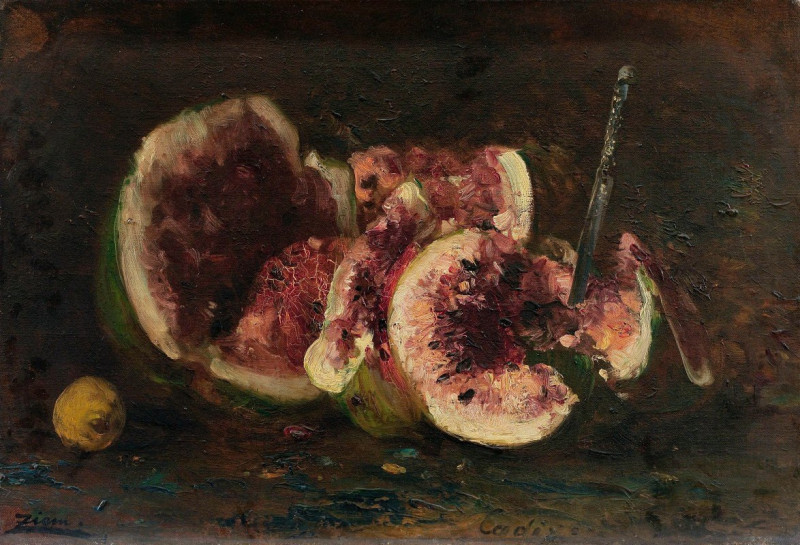

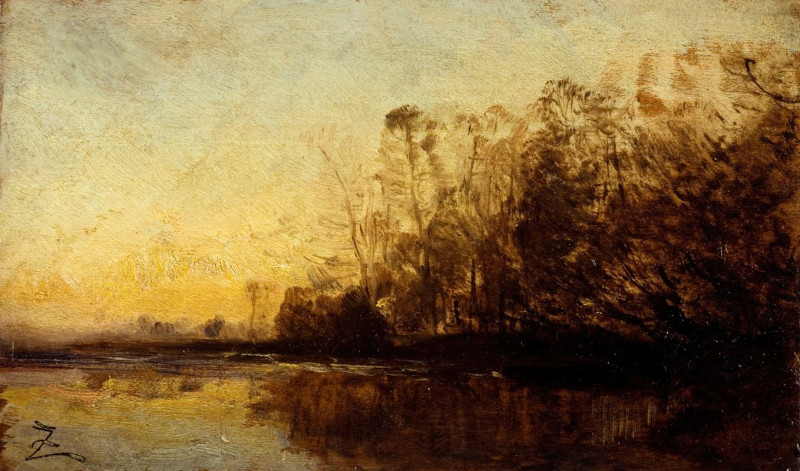
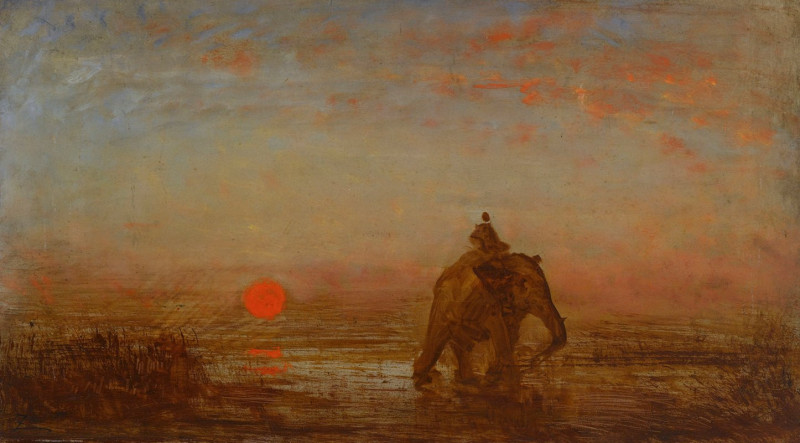
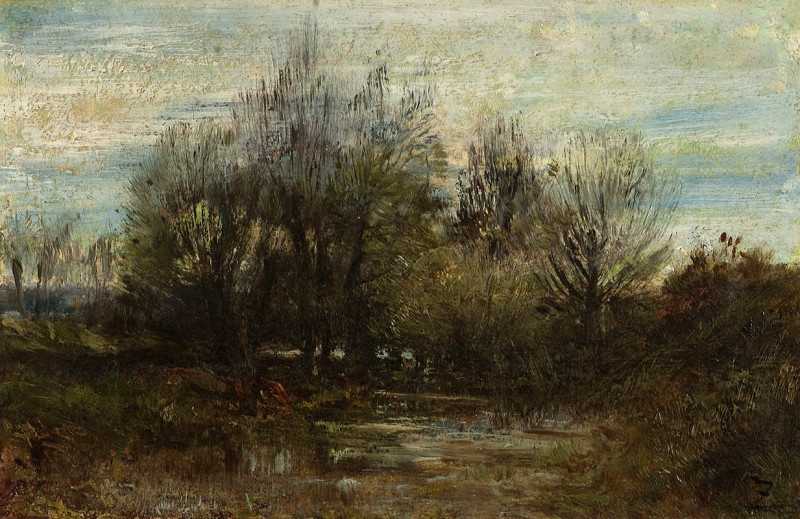
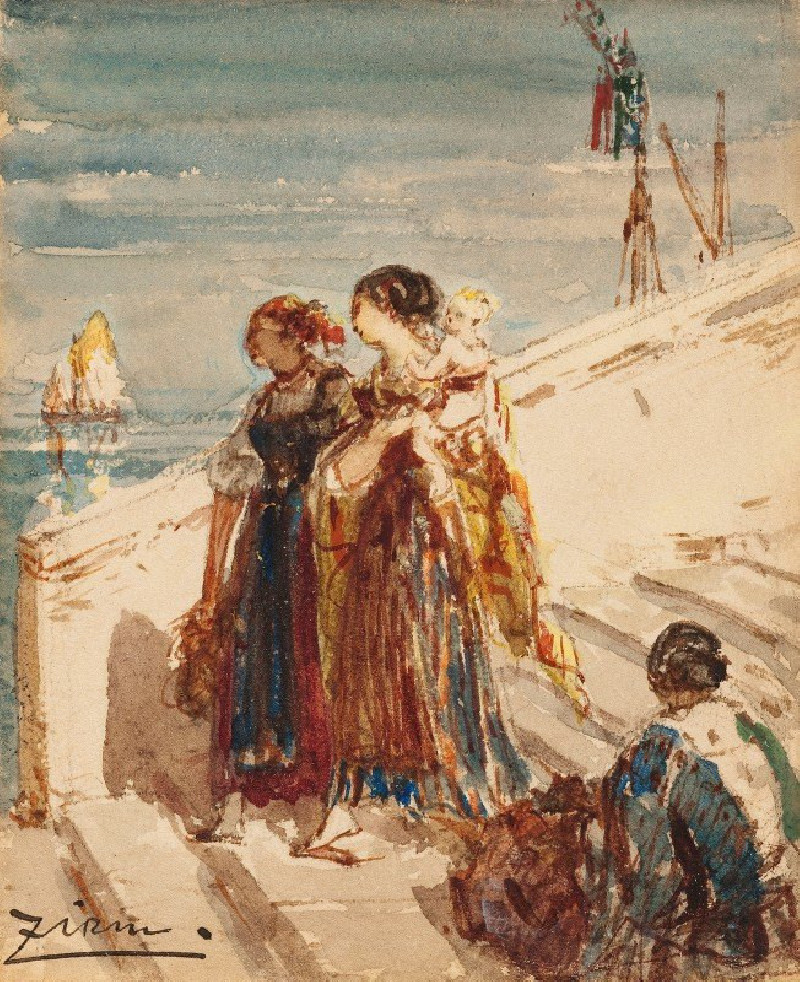

![Le Moulin [Environs De Martigues] (1890) reproduction of painting by Félix Ziem. ALL GICLEE PRINTS](https://reprodukcijos.lt/40587-large_default/reproduction-of-le-moulin-environs-de-martigues-1890.jpg)



